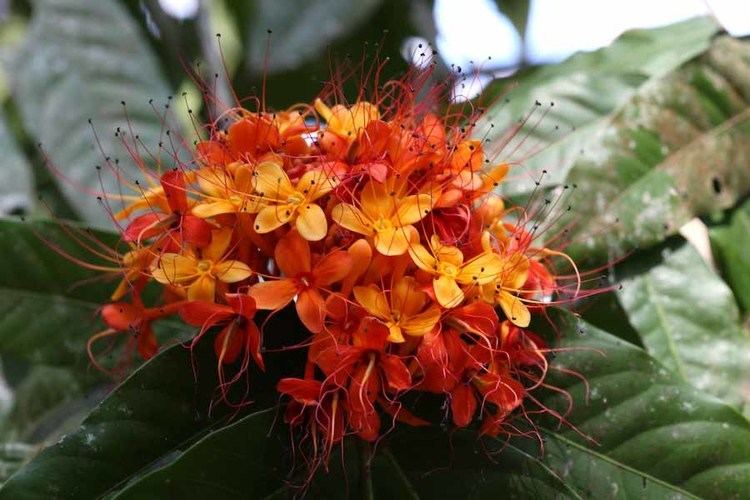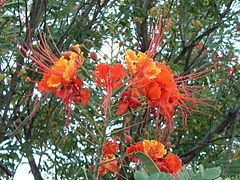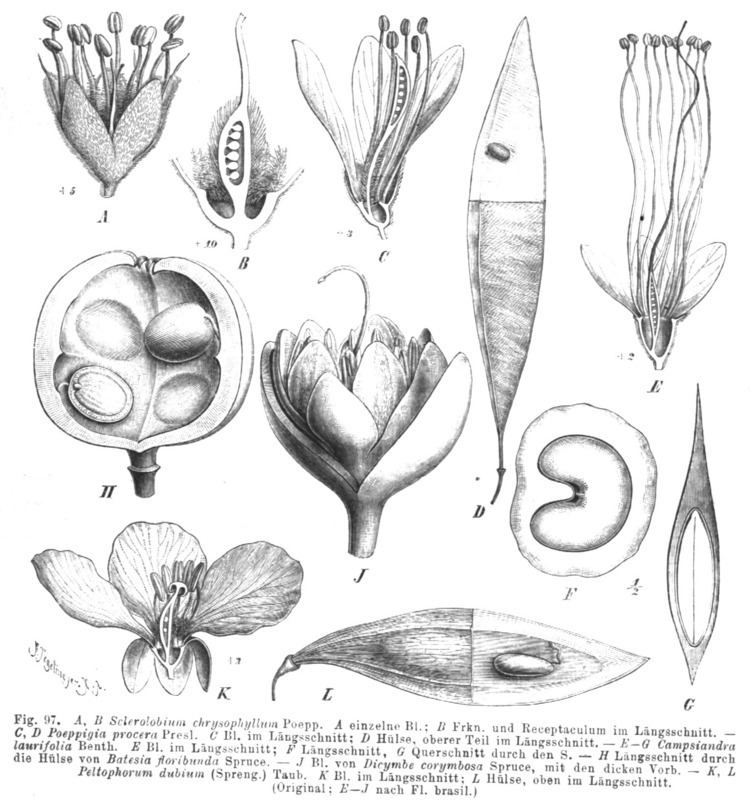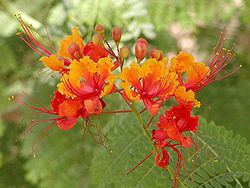Scientific name Caesalpinioideae | Higher classification Legumes | |
 | ||
Lower classifications Cassia, Bauhinia, Senna, Golden shower tr, Tamarind | ||
Caesalpinioideae is a botanical name at the rank of subfamily, placed in the large family Fabaceae or Leguminosae. Its name is formed from the generic name Caesalpinia. It is known also as the peacock flower family.[1]
Contents
- Delonix regia caesalpinioideae flor do para so flamboyant
- Caesalpinioideae
- Taxonomy
- Phylogenetics
- References

The Caesalpinioideae are mainly trees distributed in the moist tropics, but include such temperate species as the honeylocust (Gleditsia triacanthos), Kentucky coffeetree (Gymnocladus dioicus), and redbud (Cercis canadensis). Their flowers are zygomorphic, but are very variable. Nodulation is rare in this subfamily, and where it does occur, nodules have a primitive structure.

In some classifications, for example the Cronquist system, the group is recognized at the rank of family, Caesalpiniaceae.
Distinguishing characters:
The subfamily Caesalpinioideae contains 180 genera in all over the world.
Floral formula - % ○+ K(5)or5 C5 A10 G_
Delonix regia caesalpinioideae flor do para so flamboyant
Caesalpinioideae
Taxonomy

Until recently the Caesalpinioideae were divided into four tribes (Caesalpinieae, Cassieae, Cercideae, and Detarieae). However, modern molecular phylogenetics have shown that these groupings were somewhat artificial. The most important finding was that the Papilionoideae and Mimosoideae arose from within the Caesalpinioideae, thus the Caesalpinioideae (as currently circumscribed) are paraphyletic. Therefore, they are likely to be split into several subfamilies, although it is not yet clear what those subfamilies should be.
Phylogenetics

Caesalpinioideae, as traditionally circumscribed, is paraphyletic. Several molecular phylogenies have shown that the other two subfamilies of Fabaceae (Faboideae and Mimosoideae) are both nested within Caesalpinioideae.

Asterisks (*) indicate clades traditionally assigned to Caesalpinioideae; the other two subfamilies (which are nested within Caesalpinioideae) are underlined.
